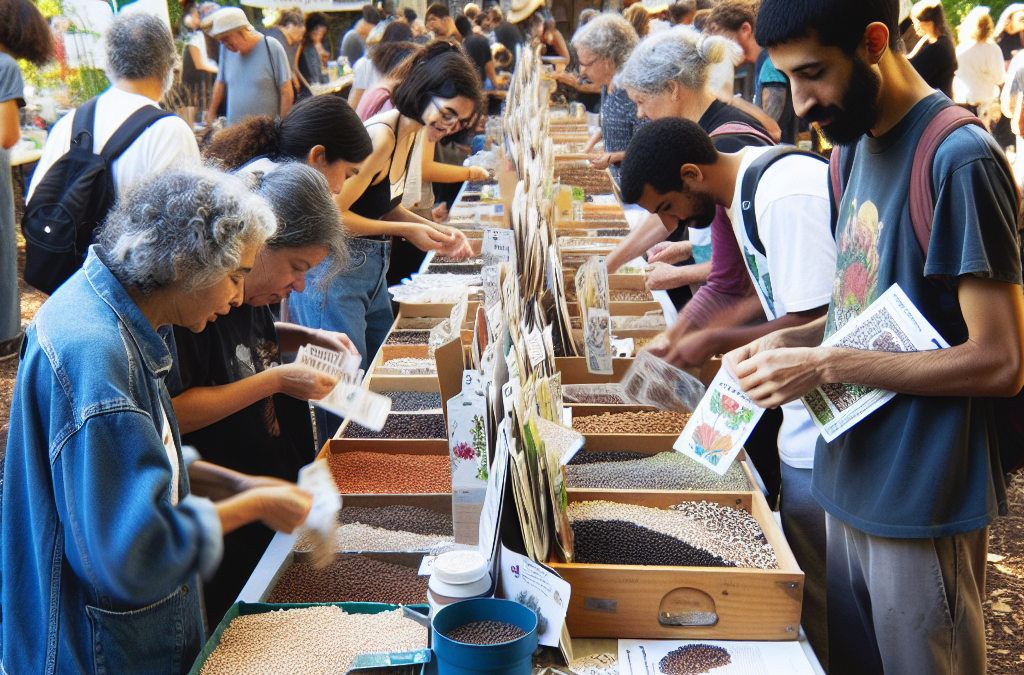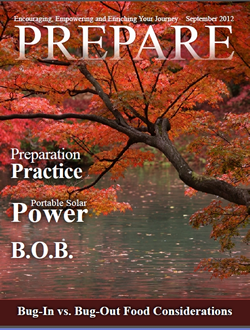Hey there! So, I recently dove into the world of gardening and stumbled upon this fantastic concept called a local seed exchange program. Let me tell you, it’s a game-changer for anyone who loves to grow their own plants. After getting my hands dirty and doing some research, I’m excited to share my experiences and thoughts on this. Here’s how you can kick off your own local seed exchange.
Understanding the Basics of Seed Exchange
What is a Seed Exchange?
A seed exchange is basically a community event where gardeners, farmers, and plant enthusiasts come together to swap seeds. Think of it as a potluck, but instead of bringing food, you’re bringing seeds! It’s a fantastic way to diversify your garden, share your favorite plants, and save some cash while you’re at it.
Why do we swap seeds? Well, there’s a bit of fun in trying something new and surprising in our gardens. Maybe you’ve got a super cool heirloom variety of tomatoes or some exotic herbs you’ve been growing, while your neighbor has a fantastic array of peppers. Through exchanges, we can share the love of gardening and improve our plant game.
Plus, it’s a great way to promote biodiversity. Every time you swap seeds, you’re helping to keep rare and unusual varieties alive, which is super important for the environment!
Why Start a Local Seed Exchange?
Starting a local seed exchange can be incredibly rewarding. For one, it fosters community spirit! I’ve seen people come together, share stories, and make new friends over their common love for gardening.
Another reason is sustainability. Many of us are becoming more conscious of our impact on the planet, and seed exchanging is a great way to reduce waste. Instead of tossing leftover seeds that we might not use, we can pass them on to someone who will thrive off them.
Lastly, it gives everyone access to a wider variety of seeds. Local nurseries might not carry the unique seeds we crave, but through exchanges, we tap into a wealth of local knowledge and flavors.
Connecting With Fellow Gardeners
Building a network of fellow gardeners is one of my favorite aspects of starting a seed exchange. The connections you make can offer support, knowledge, and a whole bunch of fun! Organizing an event means reaching out to your local gardening clubs, community centers, or even social media groups to spread the word.
When you connect with others, you’ll also find that everyone has different experiences and knowledge to share. I’ve learned tons about gardening methods just by chatting with other gardeners during these exchanges.
So don’t be shy! Reach out, engage, and build your gardening tribe. Who knows, you might even discover a long-lost gardening mentor in your locale!
Planning Your Event
Choosing a Date and Venue
Alright, now that you’re hyped about the idea, it’s time to plan. First off, you’ll want to choose a date and venue for your seed exchange. A community garden, park, or local library might be perfect! Make sure it’s a spot that’s easily accessible for everyone.
When it comes to picking a date, consider the growing season in your area. Late winter or early spring is typically ideal since that’s when everyone starts dreaming about what to plant!
Don’t forget to check local calendars for conflicts — you don’t want your event to clash with something major that could take away your potential attendees!
Promoting the Event
Once your date and venue are set, promote, promote, promote! Use social media, flyers, word of mouth — all the good stuff. I’ve found that the more excitement you create, the more people will be willing to join in. Create a catchy event name or theme to grab attention.
Don’t shy from reaching out to local gardening groups and clubs; they can be a wealth of potential participants. Also, consider setting up an online event page. This allows for questions and updates leading up to the big day!
And remember — photos and stories are a must! Before the event, share what you’re bringing. This will encourage others to think about what they could offer, setting the stage for a truly engaging day.
What to Bring to the Exchange
Before the big day arrives, think about what you want to bring. Of course, gather the seeds you want to share, but also consider bringing gardening supplies like pots, labels, or even books that you don’t need any longer. This can make your exchange even more appealing!
Create a little information card for each seed type you’re sharing, including growing tips and any other fun facts. It’s a small touch that shows you care about sharing your knowledge alongside the seeds.
Lastly, prepare for some conversations! Be ready to chat about your own gardening experiences — people love to hear stories about what has worked or gone hilariously wrong!
Conducting the Seed Exchange
Setting Up the Space
On the day of your seed exchange, take some time to set up your space. Organize tables or areas where people can set out their seeds. Group similar plants together so folks can easily browse through them.
Make sure there are plenty of chairs for people to chat and share experiences. A warm, welcoming space will encourage more interaction and a lot of fun! If it’s outdoors, make sure there’s some shade or seating options to keep everyone comfortable.
Sometimes a small backdrop or banner can also add a fun vibe. It helps in making the space feel like a celebration, rather than just another event.
Facilitating the Exchange
When it comes time for the actual exchange, don’t just leave it up to everyone to figure it out on their own! Facilitate the process by explaining how it’ll work. Share how many seeds each person should aim to bring to swap.
Also, if you want, you could create a fun system — like a token for every packet of seeds brought, or a timed free-for-all swap. Encourage people to share stories as they swap. You’ll find people bonding over shared experiences!
Keep the atmosphere light and enjoyable. Remind everyone that the goal is to have fun and learn from each other. The more relaxed everyone is, the more seeds will get swapped and knowledge shared!
Gathering Feedback
After the event, remember to gather feedback. I’ve found that just asking folks what they thought, what they enjoyed, and what could be improved is invaluable!
Consider sending a follow-up message, thanking them for attending and inviting their suggestions. This not only builds community trust but helps ensure your next event is even better!
After all, the whole point of a seed exchange program is to grow — not just our plants, but also our community bonds!
Maintaining the Community
Follow-Up Gatherings
To keep things rolling, consider scheduling follow-up gatherings. Maybe a seasonal check-in or a small monthly meet to discuss gardening progress. This allows you to maintain connections and keep the gardening spirit alive among participants!
You can also create a newsletter to keep everyone informed about upcoming events or seasonal tips together. Regular communication keeps everyone engaged and looking forward to the next exchange.
Plus, it creates a tight-knit community that thrives on shared knowledge and experiences, making everyone feel like they belong.
Building Online Presence
In today’s digital world, having an online presence is crucial. Creating a Facebook group or an Instagram page can be a great way to keep the conversation going. People can share pictures of their plants, ask questions, and stay in touch throughout the year.
This platform also allows you to document the different plants exchanged and their journeys, adding a fun twist to your local seed exchange story!
Having a digital footprint helps you to expand your reach and include people who may not be able to attend in person but are passionate about gardening nonetheless.
Incorporating Education
Don’t forget about incorporating educational opportunities! Bringing in speakers or organizing educational workshops about sustainable gardening, seed saving, or pest control can be hugely beneficial.
Education strengthens community ties and gives participants something new to learn. Plus, it can attract new gardeners who may want to hop on board the seed exchange bandwagon.
Sharing knowledge fosters a culture of growth, and isn’t that the whole point of gardening? To grow together both in our gardens and as a community!
Conclusion
Starting a local seed exchange program can enrich your gardening experience and create a flourishing community. It’s about more than just seeds; it’s about connection, knowledge-sharing, and fostering a love for gardening in your local area. So, roll up your sleeves, get people involved, and let’s make your gardening dreams bloom!
FAQ
1. What types of seeds can I bring to the exchange?
You can bring a variety of seeds, including vegetables, herbs, flowers, and native plants. Just make sure they’re suitable for your local growing conditions!
2. Do I need to label my seeds?
Absolutely! Labeling your seeds with their names and any special care tips will make it easier for others to understand what they’re getting. It adds a personal touch!
3. Is there a limit to how many seeds I can take?
Typically, there’s no strict limit. However, a general guideline is to take about the same amount of seeds you’re bringing. It keeps things balanced and fair.
4. Can I attend if I’m new to gardening?
Yes, definitely! Seed exchanges are a perfect place for beginners. Everyone is there to share knowledge and experiences, so don’t hesitate to join in!
5. How can I keep the community engaged after the exchange?
Keep the momentum going by planning follow-up events, creating an online group, and sharing regular updates. Continuous engagement ensures everyone stays connected!





